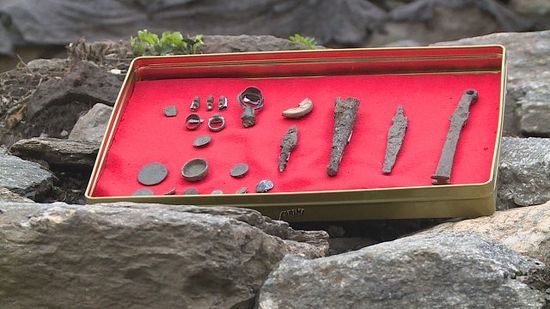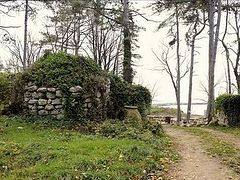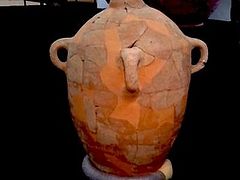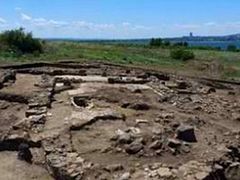Source: Archaeology in Bulgaria
October 21, 2015
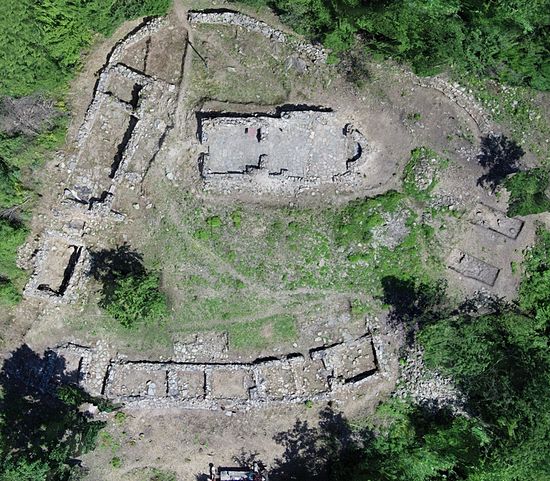 An aerial view of part of the ruins of the 15th-17th century AD St. Iliya Monastery at the Urvich Fortress near Bulgaria’s capital Sofia, upon the completion of the 5-year excavations of the monastery. Photo: Archaeological Team, National Museum of History
An aerial view of part of the ruins of the 15th-17th century AD St. Iliya Monastery at the Urvich Fortress near Bulgaria’s capital Sofia, upon the completion of the 5-year excavations of the monastery. Photo: Archaeological Team, National Museum of History
Archaeological structures and artifacts from the 14th-17th century AD have been discovered during the last days of the excavations of the late medieval monastery St. Iliya (St. Elijah) at the Urvich Fortress near the Bulgarian capital Sofia.
The latest discoveries from the medieval Bulgarian monastery at the Urvich Fortress include themagernitsa (i.e. the kitchen in an Eastern Orthodox monastery), the huge dining room of the monks, monk cells, storage facilities, frescoes, and various kinds of artifacts and coins, reports the Bulgarian National Television.
The archaeological team led by Prof. Nikolay Ovcharov, Assoc. Prof. Boni Petrunova, and the youngarchaeologist Filip Petrunov has completed the excavations of the St. Iliya Monastery which have beena 5-year effort.
The Urvich Fortress rose to prominence at the time of the Second Bulgarian Empire (1185-1396 AD), and especially at the end of the 14th century AD when it was defending the then city of Sredets (Sofia) from the invasion of the Ottoman Turks.
The St. Iliya Monastery is especially intriguing because it existed in the 15th-17th century, during the early period of the Ottoman Empire, after all of Bulgaria had ultimately been conquered by the Ottoman Turks in 1396-1422 AD.
In the last phase of the 2015 summer excavations of the Urvich Fortress, which started at the end of September, 2015, the archaeologists excavated the last remaining 15% of the territory of the medieval monastery St. Iliya which had not been explored.
Thus, the latest archaeological structures exposed by the researchers indicate that the residential building containing the cells of the late medieval Bulgarian monks had several floors.
However, only the basement has survived with the ruins of six cells paved with stone slabs. The cellswere heated with fireplaces integrated into the walls.
The archaeologists have unearthed the huge dining room of the St. Iliya Monastery which was 12 meters long, had a large hearth, and could fit dozens of people meaning that the monastery had at least 40-50 monks.
The main entrance of the late medieval monastery has also been exposed. It was paved with large stone slabs, and was protected by a gate tower, part of which has survived to this day.
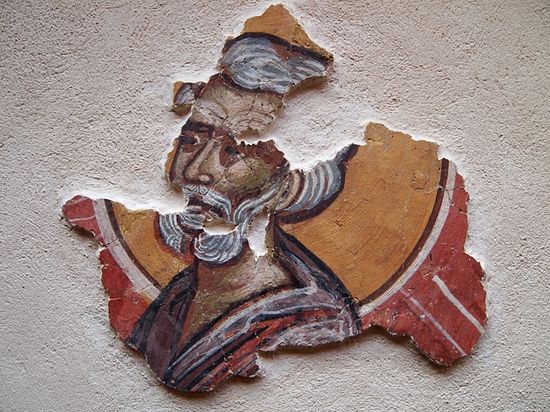 A 14th century fresco from the St. Iliya Church at the Urvich Fortress near Bulgaria’s Sofia. Photo: Monitor daily
A 14th century fresco from the St. Iliya Church at the Urvich Fortress near Bulgaria’s Sofia. Photo: Monitor daily
The latest newly found artifacts from the now completed excavations of the monastery at the Urvich Fortress near Bulgaria’s capital Sofia include church frescoes, silver coins, bronze rings, and buttons, and a sword scabbard.
The very last discovery is a silver coin of the last ruler of Tarnovgrad (today’s Veliko Tarnovo), the capital of the Second Bulgarian Empire, Tsar Ivan Shishman (r. 1371-1395 AD).
While in the last five years, the archaeological team has managed to excavate the entire late medieval monastery, the Urvich Fortress and the area around the site still warrant further archaeological research.
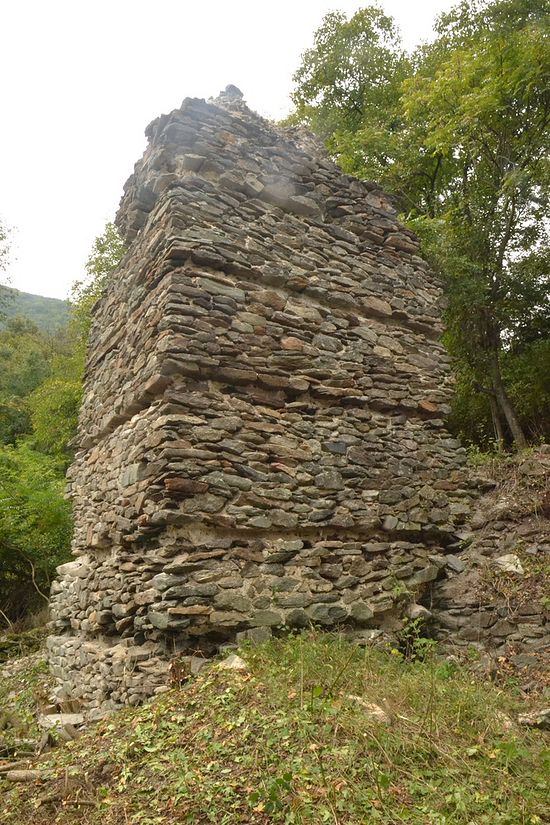 One of the towers of the medieval fortress Urvich near Bulgaria’s capital Sofia. Photo: Archaeological Team, National Museum of History
One of the towers of the medieval fortress Urvich near Bulgaria’s capital Sofia. Photo: Archaeological Team, National Museum of History
The site of the St. Iliya Monastery covers an area of 1.3 decares (app. 0.33 acres), and appears to have been inhabited long before the Late Middle Ages because it has yielded archaeological finds from the period between the 5th century BC and the 17th century AD.
Most of the wonderful and numerous medieval Bulgarian monasteries were destroyed by the OttomanTurkish invaders or were turned into mosques.
For some reason, however, at the end of the 14th century AD or the beginning of the 15th century AD, the Ottoman conquerors allowed the local Bulgarian population to built a monastery around the St. Iliya Church at the site of the destroyed Urvich Fortress.
“The conquerors most probably gave the people from the local villages – Kokalyane, German, Lozen – the privilege of having a monastery of their own because they enjoyed the status of guardians of themountain pass between Sofia and Samokov,” hypothesizes lead archaeologist Nikolay Ovcharov.
However, even the special status of the local population did not save the monastery from destruction by the Ottoman Turks, which could have been an act of revenge against the local Christians during one of the many Ottoman-Habsburg Wars when the Austrian forces often advanced into the Western Balkans.
Thus, the monastery surviving the Urvich Fortress, which itself was destroyed at the end of the 14thcentury, perished at the end of the 17th century during one of the Austro-Turkish Wars when theAustrians reached the town of Dragoman, almost reaching Sofia. They were repulsed, and the Turks ravaged all of Western Bulgaria, including the surviving monastery at Urvich, most likely in retaliation of the local Bulgarian population’s collaboration with the Austrian forces.
The Bulgarian archaeologists have found evidence of a large fire at the monastery in the late 17thcentury, a hypothesis also supported by the discovery of a coin of Ottoman Sultan Suleiman II (r. 1687-1691).
The Urvich Fortress and the St. Iliya Monastery are connected with legends about Tsar Ivan Shishman (r. 1371-1395 AD), the last Tsar of the so called Tarnovo Tsardom, one of the successor states of the Second Bulgarian Empire at the end of the 14th century.
In 1371 AD, this is where the first major battle occurred between the forces of Tsar Ivan Shishman and the Ottoman Turks. The battle was a draw but the Turks did have to stop their advance for 7-8 years. Eventually, they took Sofia and Urvich in the 1380s.
“In the darkest centuries of the Ottoman Yoke (i.e. the period of the Ottoman Yoke (1396-1878/1912) when Bulgaria was part of the Ottoman Empire) the Urvich Monastery was like a beacon for Christianity and for the Bulgarians in the region. They came here to study, pray, and get married,” says Ovcharov.
The fact that the St. Iliya Monastery near Sofia survived on the spot of the Urvich Fortress after it was razed to the ground by the Ottomans is also mentioned by 18th century Bulgarian monk and scholar St. Paisiy Hilendarski (St. Paisius of Hilendar) who in 1762 AD authored the “Istoriya Slavyanobolgarskaya” – “Slavonic-Bulgarian History” – the book that, essentially, led to the Bulgarian National Revival in the 18th-19th century.
“Tsar Ivan Shishman had a fortress with a monastery which was in the gorges of the Iskar River, and was very close to Sredets,” writes Paisiy in his “History”.
The last discovery made during the excavations of the Urvich Monastery – the silver coin of Tsar Ivan Shishman – has been taken as a reminder of the Ottoman invasion.
“We are very glad that this find has come up on the last day of the excavations. This is a silver coin of Tsar Ivan Shishman from those dramatic years of the siege of Sofia,” Ovcharov says.
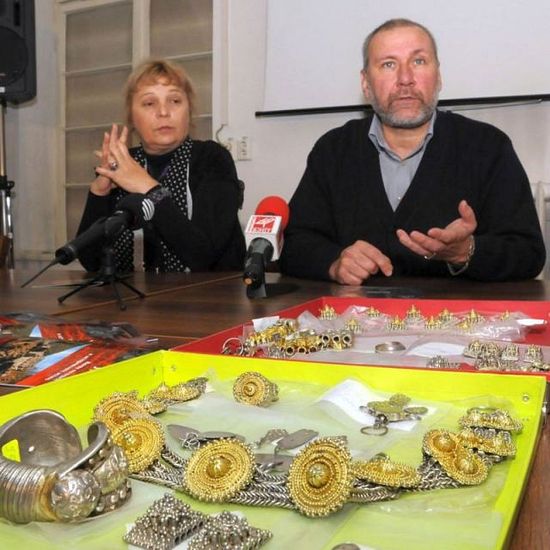 Archaeologists Boni Petrunova (left) and Nikolay Ovcharov (right) showing the Urvich Treasure. Photo: Novinar daily
Archaeologists Boni Petrunova (left) and Nikolay Ovcharov (right) showing the Urvich Treasure. Photo: Novinar daily
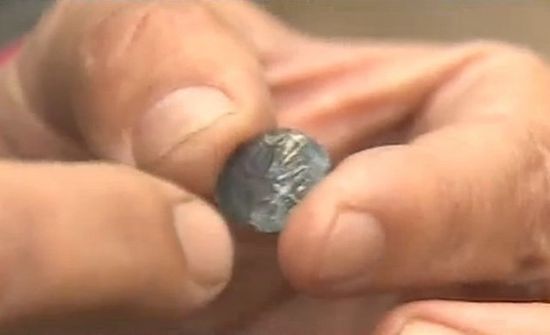 The very last discovery from the 5-year excavations of the Urvich Monastery – a 14th century silver coin of Bulgarian Tsar Ivan Shishman (r. 1371-1395). Photo: TV grab from BNT
The very last discovery from the 5-year excavations of the Urvich Monastery – a 14th century silver coin of Bulgarian Tsar Ivan Shishman (r. 1371-1395). Photo: TV grab from BNT
At a news conference after the wrapping up of the digs at the Urvich Monastery, the archaeologistshave shown once again to the public the most impressive discovery ever made at the site of the Urvich Fortress, the so called Urvich Treasure – a collection of gold and silver decorations and jewelry from the Late Middle Ages, reports the Novinar daily.
Items from the Urvich Treasure were first shown to the Bulgarian public in 2011; it was rescued by anEnglish history teacher, John Burnip, who bought it at an auction in London in 1979, and in 1983 donated it to the Bulgaria’s National Institute and Museum of Archaeology. It is known that thetreasure had been dug up illegally at the Urvich Fortress near Sofia (it had been found hidden in a clay vessel), and had somehow been smuggled to the UK.
The Urvich Treasure is dated to the 14th-17th century AD, and consists of silver and gold-coated wreathes, belt decorations, and head decorations used by the late medieval Bulgarian nobility for wedding rituals as well as two rings, a bracelet, and different necklace decorations.
Sofia Municipality has made it clear it is working on making Urvich part of a large-scale route forcultural tourism including a high number of archaeological and historical sites around the Bulgarian capital.
Background Infonotes:
The fortress of Urvich is located some 20 km southeast of Bulgaria’s capital Sofia. The medieval fortress there was built in the 9th-10th century by the First Bulgarian Empire, possibly as early as the reign of Khan (or kanas) Krum (r. 803-814 AD) who first conquered Sofia for Bulgaria in 805 AD, and was lated developed during the reign of Tsar Ivan Asen II (r. 1218-1241 AD). It was first excavated in 1969 by Prof. Dimitar Ovcharov, father of Prof. Nikolay Ovcharov. Prof. Nikolay Ovcharov has resumed the excavations there in recent years. The Urvich archaeological site bears marks from different time periods – from the Roman Empire in the late Antiquity, Byzantium, the First Bulgarian Empire (680-1018 AD) and the Second Bulgarian Empire (1185-1396 AD) to the Ottoman Empire. In Bulgarian culture and national memory it is mostly known as a site of heroic resistance against the Ottoman Turkish invaders in the second half of the 14th century by some of the last state leaders of medieval Bulgaria, defending the strategically vital city of Sredets (today’s Sofia).
As the Second Bulgarian Empire was being conquered by the Ottoman Empire in the late 14th century (Sofia was conquered in 1385 AD), the Urvich fortress was set on fire but was later rebuilt and used by the Ottoman Turkish invaders; the local monastery was also restored. The archaeological excavations at Urvich have unearthed murals from the St. Iliya (St. Elijah) Church and St. Iliya Monastery, and some of the frescoes have been shown to the public. It has also been emphasized that there is information about the monastery at Urvich in the first History of Bulgaria, the Slavic-Bulgarian History, compiled by the Bulgarian monk Paisiy Hilendarski in 1762 AD, which was the book that essentially laid the foundations of the modern-day Bulgarian nation leading to the so called period of Bulgarian National Revival (late 18th-19th century). There is evidence that the St. Iliya Church at the Urvich Monastery was restored in the 15-17th century.
Back in 2011, Prof. Nikolay Ovcharov unveiled 18 gold coins found at Urvich which were minted by medieval Bulgarian Tsar Ivan Alexander (r. 1331-1371). They are believed to have been part of alegendary medieval Bulgarian treasure – “treasure of the Shishman Dynasty”, which ruled Bulgariafrom the ascension of Tsar Ivan Alexander to the throne in 1331 AD to the demise of his sons – Tsar Ivan Shishman (r. 1371-1395) and Tsar Ivan Sratsimir (r. 1371-1396) in the hands of the Ottoman Turks. It is believed that sometime in 1371-1372 AD the last Tsar of Bulgaria Proper, Ivan Shishman, buried his treasure at the fortress of Urvich where his forces made a stand against the invading Ottoman Turkish forces fighting fierce battles during the 1370s and 1380s. The archaeologists believe that Tsar Ivan Shishman’s treasure really existed but that most of it has been snatched by treasure-hunters and that the 18 gold coins found at Urvich are everything that is left of it.

